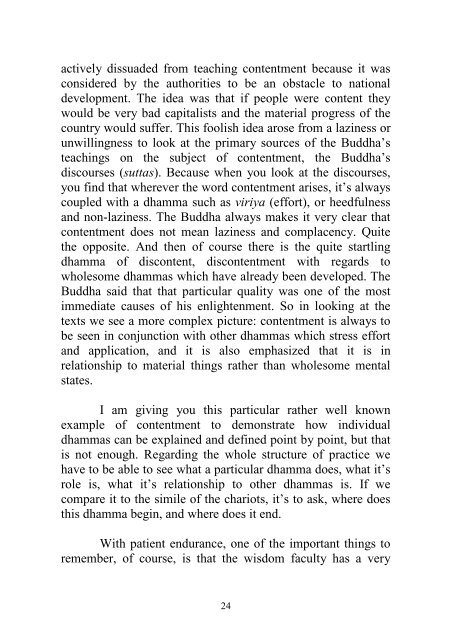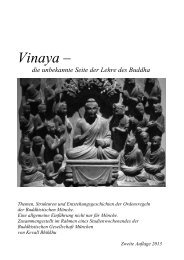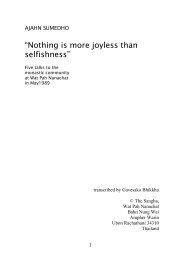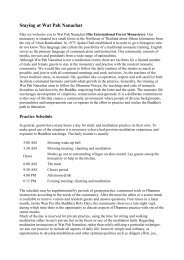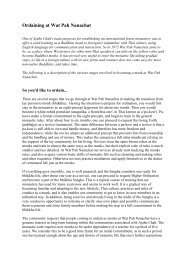Khanti - Wat Pah Nanachat
Khanti - Wat Pah Nanachat
Khanti - Wat Pah Nanachat
Create successful ePaper yourself
Turn your PDF publications into a flip-book with our unique Google optimized e-Paper software.
actively dissuaded from teaching contentment because it was<br />
considered by the authorities to be an obstacle to national<br />
development. The idea was that if people were content they<br />
would be very bad capitalists and the material progress of the<br />
country would suffer. This foolish idea arose from a laziness or<br />
unwillingness to look at the primary sources of the Buddha’s<br />
teachings on the subject of contentment, the Buddha’s<br />
discourses (suttas). Because when you look at the discourses,<br />
you find that wherever the word contentment arises, it’s always<br />
coupled with a dhamma such as viriya (effort), or heedfulness<br />
and non-laziness. The Buddha always makes it very clear that<br />
contentment does not mean laziness and complacency. Quite<br />
the opposite. And then of course there is the quite startling<br />
dhamma of discontent, discontentment with regards to<br />
wholesome dhammas which have already been developed. The<br />
Buddha said that that particular quality was one of the most<br />
immediate causes of his enlightenment. So in looking at the<br />
texts we see a more complex picture: contentment is always to<br />
be seen in conjunction with other dhammas which stress effort<br />
and application, and it is also emphasized that it is in<br />
relationship to material things rather than wholesome mental<br />
states.<br />
I am giving you this particular rather well known<br />
example of contentment to demonstrate how individual<br />
dhammas can be explained and defined point by point, but that<br />
is not enough. Regarding the whole structure of practice we<br />
have to be able to see what a particular dhamma does, what it’s<br />
role is, what it’s relationship to other dhammas is. If we<br />
compare it to the simile of the chariots, it’s to ask, where does<br />
this dhamma begin, and where does it end.<br />
With patient endurance, one of the important things to<br />
remember, of course, is that the wisdom faculty has a very<br />
24


